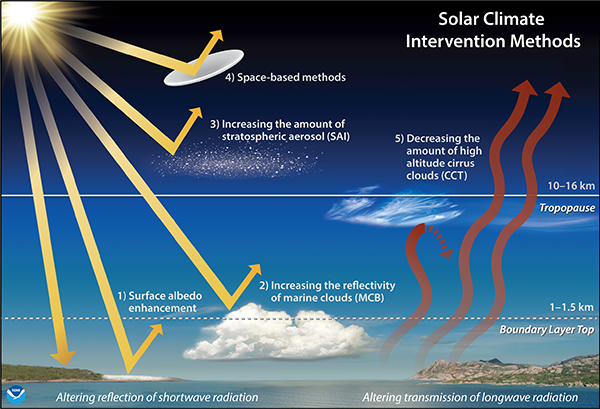A .gov website belongs to an official government organization in the United States.
A lock () or https:// means you've safely connected to the .gov website. Share sensitive information only on official, secure websites.
At the direction of Congress, NOAA has launched a multi-year research initiative to investigate natural and human activities that might alter the chemistry and reflectivity of the stratosphere, or the reflectivity of the marine boundary layer, through the addition of aerosols, and to understand the potential impacts on the Earth system. These activities include proposed climate intervention approaches to influence climate warming by reflecting sunlight from the atmosphere, which require extensive scientific research and assessment.
NOAA has established three primary research goals:
ERB funding supports four types of research projects:

The first is to develop and leverage observational methods, including balloons and high-altitude aircraft, to understand baseline aerosol conditions in the stratosphere.
The research is designed to support improved observation and assessment of stratospheric processes and Earth's radiation budget as a part of NOAA's mission to support public safety and environmental sustainability. These projects are geared both towards producing immediate results and building a foundation for future research.